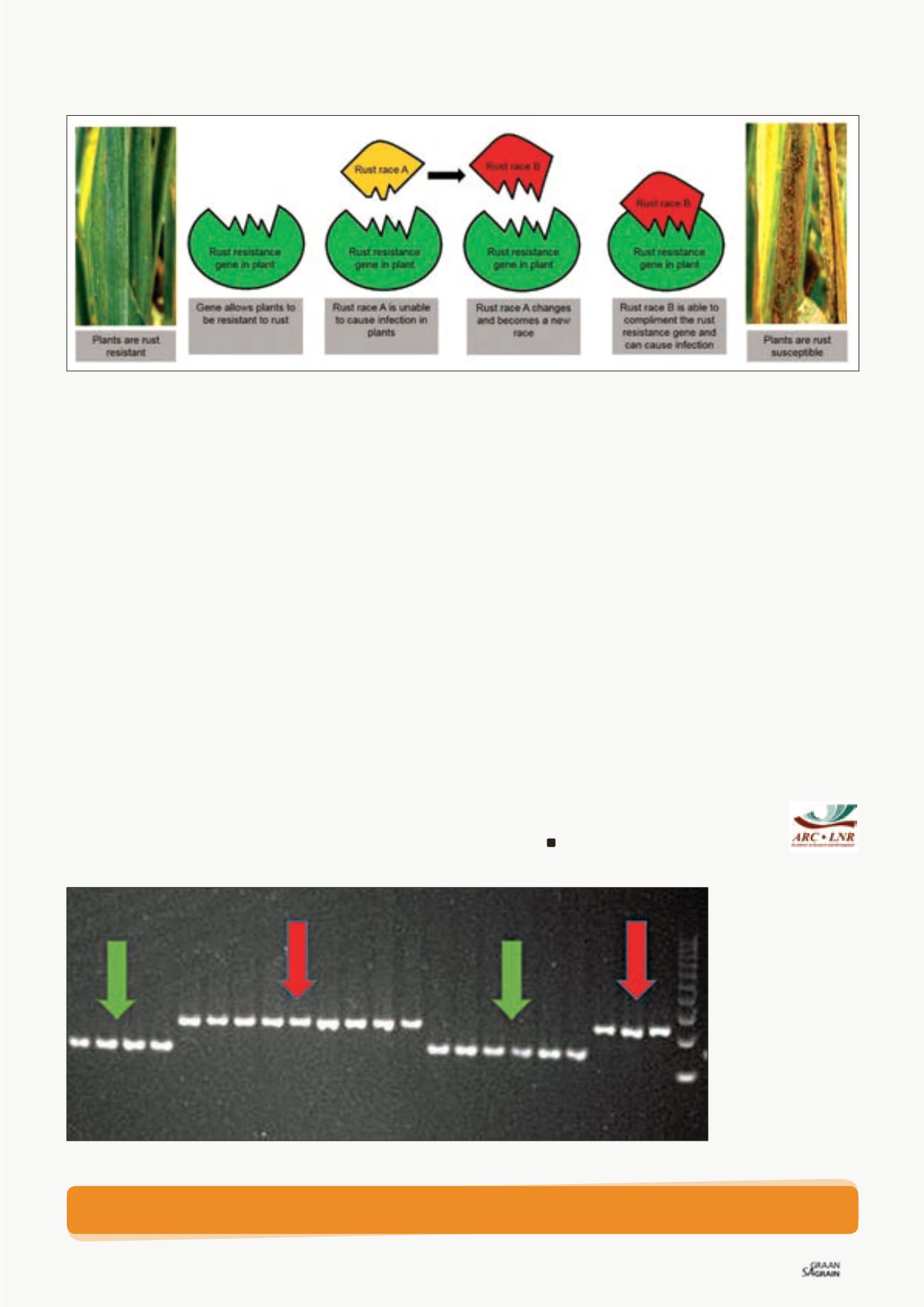

63
September 2015
stacking multiple rust resistance genes to ensure durable and effec-
tive rust resistance at all plant growth stages.
Releasing wheat cultivars with multiple genes is important in order
to ensure that if the pathogen is able to overcome the resistance of
one gene, there are “back up” genes that will still offer some level of
resistance.
The use of marker assisted selection (MAS) is a significant tool that
assists in the combining of multiple rust resistance genes. An advan-
tage of this technology is the ability to develop material with differ-
ent desired genes in a shorter period of time compared to traditional
breeding methods.
MAS is a selection process whereby plants can be identified and se-
lected using molecular markers to validate the presence of specific
genes or gene combinations, provided that molecular markers are
available for the gene of interest.
Leaf material is harvested from the target plants, DNA is extracted
and the samples undergo a polymerase chain reaction (PCR) with
specific molecular markers. Using an agarose gel system, PCR pro-
duct bands will indicate the presence or absence of the target gene.
Figure 2
is a picture of an agarose gel that contains samples to be
tested for the presence of the leaf rust gene Lr34. From this gel, it
can be identified which of the samples contain the Lr34 gene and
similarly, the samples can be tested for a wide range of other genes
which the plants may contain.
Rust resistant cultivars are your friends…
Take advantage of them
The use of broad-spectrum/durable rust resistance remains the most
effective and sustainable strategy to control wheat rusts. The emer-
gence of new rust strains is a threat to existing resistant wheat culti-
vars and there is a constant need for new sources of rust resistance
and experimentation with different gene combinations to prolong
the durability of existing resistance sources.
The use of rust resistant cultivars can reduce the negative impact of
fungicides on the environment and may also be economically benefi-
cial to wheat producers. Sometimes, planting a rust resistant cultivar
with a lower yield potential may result in higher profits compared to
planting a higher yielding rust susceptible cultivar that will require
several fungicide applications in the season.
Rust resistant wheat cultivars for the different wheat production ar-
eas can be identified and selected from the annual production guide-
lines released by the ARC-Small Grain Institute (ARC-SGI) and are
available on the website
www.arc.agric.za.Contact Krishna Naicker at 058 307 3436 or
NaickerK@
arc.agric.za
.
Figure 1: Illustration of the formation of new rust races that might cause resistant wheat cultivars to become susceptible.
Figure 2: Agarose gel indicating the presence (green arrow) or absence (red arrow) of the Lr34 rust gene.
This research was made possible with the financial assistance of the
Agricultural Research Council and the Winter Cereals Trust.

















